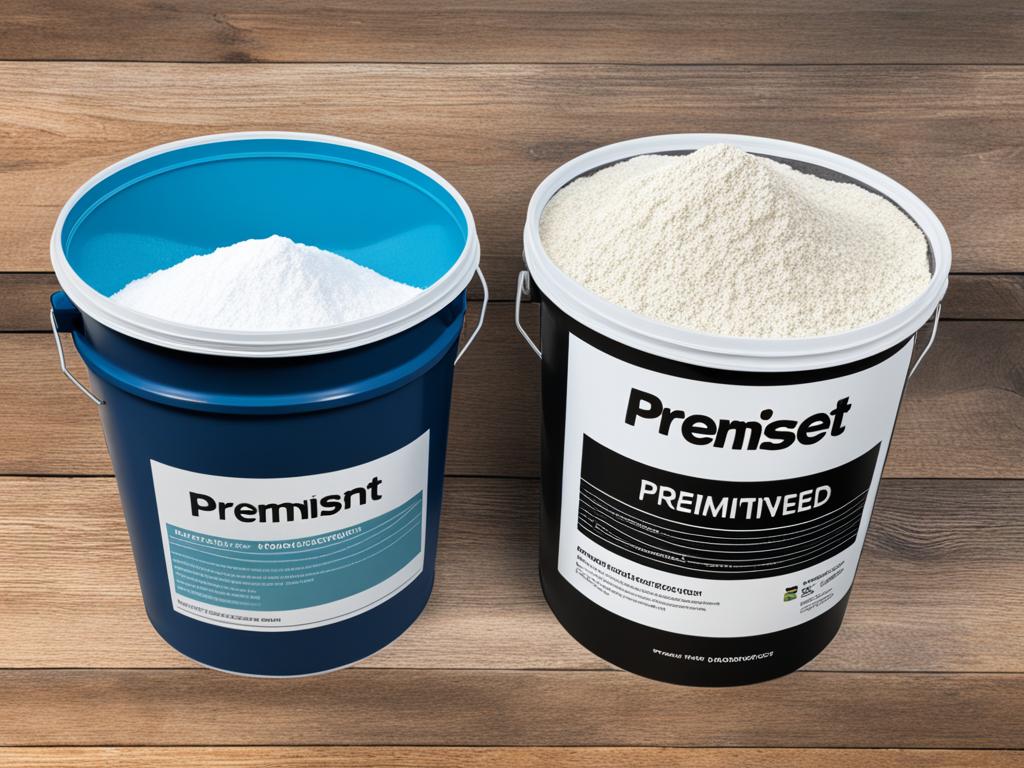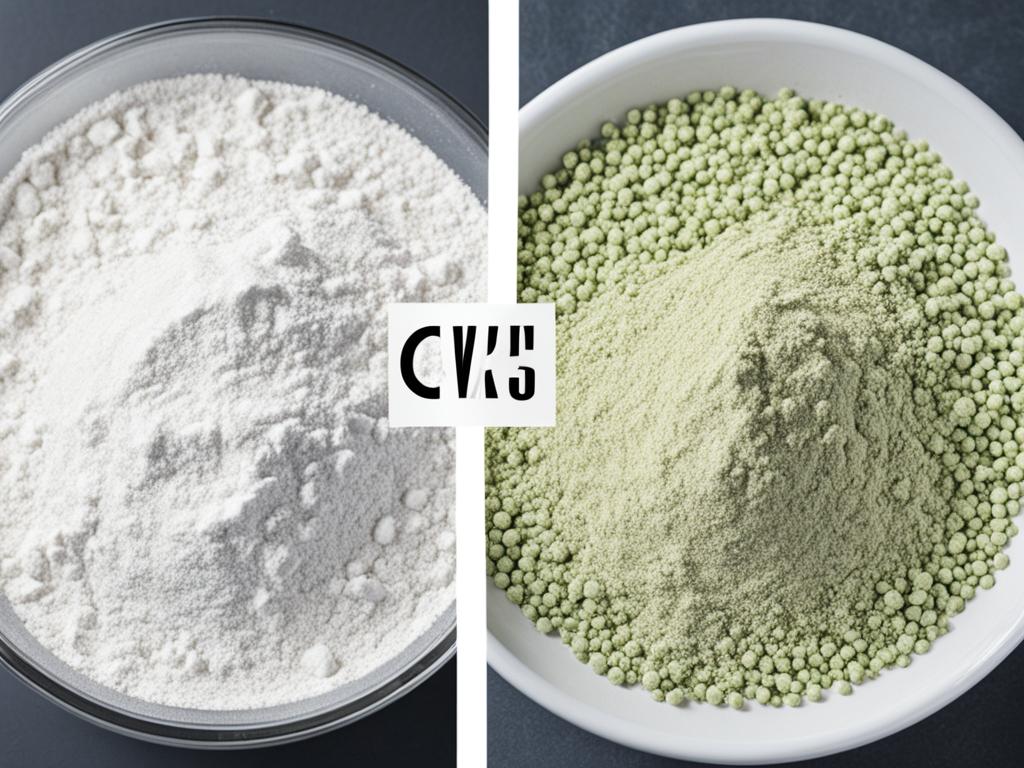When it comes to tile adhesive, the choice between premixed thinset and powder can have a significant impact on the outcome of your project. Both options have their advantages and drawbacks, so it’s essential to make an informed decision based on your specific needs and requirements.
Premixed thinset comes ready to use, eliminating the need for mixing. This convenience makes it a popular choice for DIYers or those looking for a hassle-free application process. However, premixed thinset is generally more expensive than powdered thinset.
On the other hand, powdered thinset requires mixing with water, giving you greater control over the consistency. This can be advantageous when working on projects that require leveling uneven surfaces or when using large format tiles. Powdered thinset also tends to offer a stronger bond.
Factors such as cost, durability, application, ease of use, and drying time should all be considered when deciding between premixed thinset and powder. Taking the time to evaluate these factors will help ensure a successful tile installation that meets your expectations.
Key Takeaways
- Premixed thinset is more convenient and ready to use, but it can be more expensive.
- Powdered thinset allows for greater control over consistency and offers a stronger bond.
- Consider factors such as cost, durability, application, ease of use, and drying time when choosing between the two options.
- Consult with professionals or refer to manufacturer guidelines for guidance and best practices.
- Ultimately, the right choice depends on the specific needs and requirements of your project.
Pros and Cons of Premixed Thinset
Premixed thinset offers several advantages when it comes to tile adhesive. Let’s explore the pros and cons of using premixed thinset for your next project.
Advantages of Premixed Thinset:
- Tight bond: Premixed thinset forms a strong and reliable bond between the tile and substrate, ensuring long-lasting durability.
- Ease of use: With premixed thinset, there’s no need for measuring, mixing, or adding water. It comes ready to use straight out of the tub, saving you time and effort.
- Moisture resistance: Premixed thinset offers good resistance to moisture, making it suitable for use in areas prone to dampness, such as bathrooms, showers, and kitchens.
- Mold prevention: The moisture resistance of premixed thinset helps prevent the growth of mold or mildew, ensuring a clean and healthy tile installation.
Disadvantages of Premixed Thinset:
- Potential for cracking: Premixed thinset may crack over time, particularly when used on larger tiles or in areas with heavy foot traffic. Proper application techniques and the use of additives may help minimize cracking.
- May require additives: In certain applications, premixed thinset may require additional additives to achieve its full strength and performance, adding extra cost and complexity to the installation process.
- Not recommended for wet areas or large tiles: Premixed thinset is generally not recommended for wet areas or tiles larger than 6×6 inches, as it may not provide the necessary bond strength and moisture resistance.
- Longer curing time: Compared to powder thinset, the curing time of premixed thinset may be longer, requiring more time before the tiles can be grouted or subjected to normal use.
Overall, premixed thinset offers convenience and ease of use for DIYers and contractors alike. However, it’s important to consider the specific requirements of your project and the potential limitations of premixed thinset before making the final choice.

Advantages and Disadvantages of Powdered Thinset
Powdered thinset is a versatile tile adhesive option that comes with its own set of advantages and disadvantages. When considering premixed thinset vs powder, it’s important to weigh the pros and cons to make an informed decision for your project.
Advantages of Powdered Thinset
Powdered thinset offers several benefits that make it a popular choice among DIYers and professionals. Here are some advantages to consider:
- Cost-effectiveness: Powdered thinset is generally more affordable compared to premixed options, making it an attractive choice for budget-conscious projects.
- Greater strength: When mixed correctly, powdered thinset can provide a stronger bond compared to premixed alternatives, ensuring durable and long-lasting tile installations.
- Faster curing time: Powdered thinset typically dries and cures faster than premixed options, allowing for quicker project completion and reduced downtime.
- Versatility: Powdered thinset is suitable for a wide range of applications, including large format tiles, wet areas, and high-traffic locations, providing flexibility for various project requirements.
Disadvantages of Powdered Thinset
While powdered thinset brings many advantages, it also comes with a few limitations to consider:
- Proper mixing required: Unlike premixed thinset, powdered thinset needs to be mixed with water according to manufacturer guidelines. This requires careful attention to achieve the desired consistency and bonding strength.
- Shorter pot life: Once mixed, powdered thinset has a limited pot life, meaning it must be used within a specific timeframe. It’s important to work efficiently and avoid mixing more than what can be applied in a given time.
- Leveling uneven surfaces: If your project requires leveling uneven surfaces or filling gaps, powdered thinset allows for better control over consistency and filling capabilities.
- Availability: While powdered thinset is widely available and can be found in various hardware stores, the specific brand and type needed for your project may not always be in stock, requiring extra effort to source the right product.
“Powdered thinset offers cost-effectiveness and greater strength, making it suitable for various applications. Proper mixing and shorter pot life should be considered, along with the availability of the desired product.”
| Factors | Premixed Thinset | Powdered Thinset |
|---|---|---|
| Cost | Higher | Lower |
| Strength | Adequate | Greater |
| Drying Time | Longer | Shorter |
| Availability | Widely available | May vary |

When comparing premixed thinset vs powder, considering the specific requirements of your project and weighing the advantages and disadvantages is crucial. Whether you prioritize cost-effectiveness, greater strength, or faster drying time, the choice between premixed thinset and powdered thinset can significantly impact the success of your tile installation.
Conclusion
When it comes to choosing between premixed thinset and powdered thinset for your tile installation project, careful consideration of the specific needs and requirements is essential. Both options have their advantages and disadvantages.
Premixed thinset offers convenience and ease of use, making it a popular choice for DIYers and those who prefer ready-to-use products. It provides a tight bond, moisture resistance, and mold prevention, making it suitable for various applications such as shower pans, bathroom floors and walls, and kitchen floors. However, it may crack and may not reach the same level of hardness as cement-based thinset. Premixed thinset is not recommended for wet areas or tiles larger than 6×6.
On the other hand, powdered thinset offers greater control over consistency and may provide stronger bonding properties. It is cost-effective and offers faster curing time, making it suitable for large format tiles, wet areas, and high-traffic areas. Powdered thinset requires proper mixing and may have a shorter pot life. It is recommended for projects that require leveling uneven surfaces. Additionally, it provides a strong bond and is resistant to moisture and chemicals.
To make an informed decision, factors such as cost, durability, application, ease of use, and drying time should be carefully evaluated. It is also advisable to consult with professionals or refer to manufacturer guidelines to ensure the right choice for a successful tile installation. By considering these factors and making the appropriate selection, you can achieve a beautiful and long-lasting tile installation.
FAQ
What are the pros and cons of premixed thinset?
Premixed thinset offers advantages such as a tight bond, ease of use, moisture resistance, and mold prevention. However, it may crack and may require additives for full strength. It is not recommended for wet areas or tiles larger than 6×6. It provides a strong bond, resistance to moisture and mold, and dimensional stability. However, it may take longer to cure and may not reach the same level of hardness as cement-based thinset.
What are the advantages and disadvantages of powdered thinset?
Powdered thinset offers advantages such as cost-effectiveness, greater strength, and faster curing time. However, it requires proper mixing and may have a shorter pot life. It provides a strong bond and is resistant to moisture and chemicals. It offers more control over consistency and is recommended for projects that require leveling uneven surfaces. Powdered thinset is widely available and may be more cost-effective compared to premixed options.
Which type of thinset is suitable for different applications?
Premixed thinset is suitable for applications such as shower pans, bathroom floors and walls, kitchen floors, countertops, and living areas. Powdered thinset is suitable for a wide range of applications, including large format tiles, wet areas, and high-traffic areas.
Which type of thinset is easier to use?
Premixed thinset is ready to use and offers convenience and ease of use. Powdered thinset requires proper mixing but provides more control over consistency.
What factors should be considered when deciding between premixed thinset and powder?
Factors such as cost, durability, application, ease of use, and drying time should be considered when deciding between premixed thinset and powder.
Source Links
- https://www.diychatroom.com/threads/pros-and-cons-of-ready-mixed-mortar-vs-the-powder-you-mix-for-tile-flooring.645749/
- https://www.thespruce.com/tile-mortar-guide-thinset-mastic-and-epoxy-1821651
- https://www.diytileguy.com/premixed-tile-mastic/
